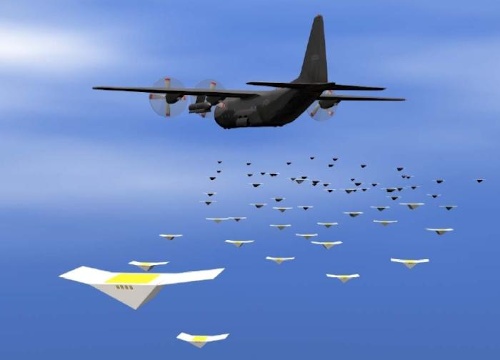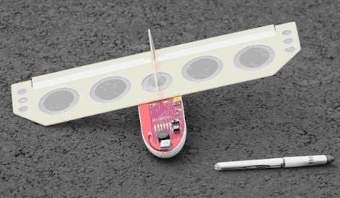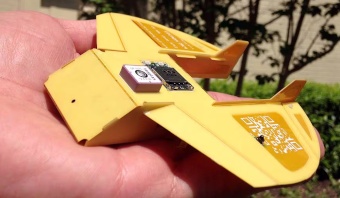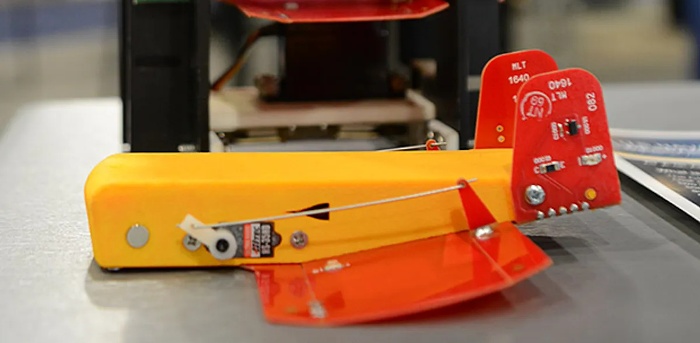Naval Reseach Lab CICADA
In 2006 or earlier, the NRL (Naval Research Laboratory) developed CICADA (Close-in Covert Autonomous Disposable Aircraft), a concept for a low-cost, GPS-guided, disposable micro air vehicle that can be deployed in large numbers to "seed" an area with miniature electronic payloads. The CICADA can be dropped from any airborne platform. It is essentially a flying circuir board the size of a paper airplane, with a very low unit cost.
 |
| Image: NRL |
| CICADA (Notional concept image) |
The CICADA proof-of-concept vehicles have gone through several design iterations, numbered Mark I, II, III etc. The original design featured folding wings, and concentrated on a high packing factor. It was envisioned that almost 10000 of the drones could be dropped in a single pass, distributing sensors all over the battlefield. Drop tests of CICADA from unmanned aircraft and balloons around 2011 showed the principal validity of the design. The vehicles proved to aerodynamically viable, with a glide ratio of about 3.5:1 and being able to right themselves when tumbling after the drop.
 |  | |
| Image: NRL | Image: Laurent Barthelemy | |
| CICADA (intermediate versions) | ||
By 2017, CICADA had evolved into the Mk 5 version. It consisted of a 3D-printed fuselage holding the embedded sensors, and circuit boards which doubled as flying surfaces. From a specially designed launch tube, up to 32 CICADAs can be deployed at once. One envisioned use case is meteorological research, e.g. by flying swarms of the little drones into tornadoes.
 |
| Image: Evan Ackerman/IEEE Spectrum |
| CICADA Mk 5 |
Specifications
Exact physical and performance data for the various CICADA versions are not available.
Main Sources
[1] NRL
UAV Fact Sheets
[2] AFCEA: It's a Bug,
It's a Plane, It's a Flying Circuit Board
[3] Defense News:
US Military's New Swarm of Mini-Drones
[4] IEEE Spectrum, Evan Ackerman:
Naval Research Lab
Tests Swarm of Stackable CICADA Microdrones
Back to Directory of U.S. Military Rockets and Missiles, Appendix 4
Last Updated: 23 January 2024